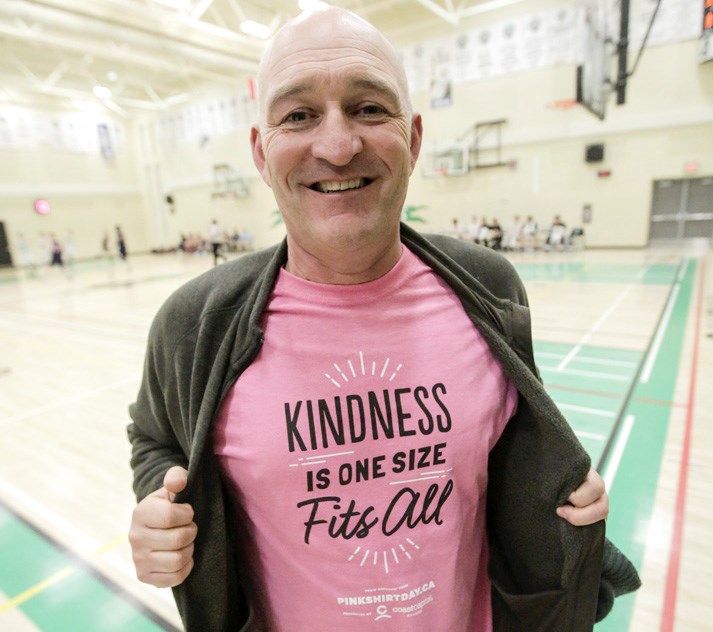Pink is a colour that portrays kindness, care and compassion.
And while hundreds of students and staff members will don pink for Pink Shirt Day at Christ the Redeemer Catholic Schools on Feb. 24 as part of a Canada-wide anti-bullying campaign, the traits the colour portrays are emphasized in the division 365 days a year, said its associate superintendent.
“Our goal in our division is to make sure we have a welcoming, safe, caring environment for everyone,” said associate superintendent Mariette Moss, a former principal at St. John Paul II Collegiate. “We will support the schools with the anti-bullying day, some of our schools will be wearing pink.
“But we are always opening up conversations about bullying and provide a space for students to talk about bullying.”
Pink Shirt Day began in 2007, when students at a Nova Scotia high school rallied in support of one of their peers who had been teased for his bright fashion statement.
Nova Scotia students David Shepherd, Travis Price and their friend wore pink to support a Grade 9 student who had earlier been bullied for wearing a pink shirt school to school, according to the Pink Shirt Day website.
Each of the CTR Catholic schools have either a school liaison worker and/or a connections worker who is another adult in the building who can advocate for the students, Moss explained.
“They can provide a safe space for conversation,” Moss said. “Teachers and administrators (principals, and vice-principals) will work on it – we want the students to know that we have adults they can go to to talk about it.”
While love and caring for students is stressed throughout the year – it is further emphasized if a bullying incident between students occurs. That care is shown for all the parties involved, both the bully, the victim and the families.
“One of the staff members will work with the children involved,” Moss said. “There is restorative practice, which is a strategy to really come prepared to repair the relationships that have been damaged… To create empathy and understanding as to what the actions have meant – how they have hurt someone.
“Then move forward to correct that.”
Moms and dads play an important role in resolving the issues.
“The staff member makes sure they are aware of the situation as well,” said Moss, adding often it is parents who approach a school about a bullying issue concerning their children.
Moss said the schools stress students communicate with their parents about any issues at schools.
Moss, a long-time teacher and school administrator in the division, said while bullying isn’t common, she has had to deal with the issue in the past.
“We look at each situation as unique and tackle each of them one at a time,” she said. “Having conversations with the students and having parents involved is a big part of it.
“It is different now. Back when I was a teacher, 15 years ago, it was more playground bullying, which can still happen in elementary.
“But now children are facing extra challenges in social media.”
As a result, the roles of the division, schools and most importantly, its staff have changed.
“Our responsibility is to work with them (students) and help them make better choices on social media,” Moss said.
The division started its #relationships a digital age three years ago. The purpose of this initiative is to develop both curriculum and school culture to help students examine the impact that screen time and smartphones have on their relationships with God and each other, with an overarching personal wellness focus.
The program doesn’t devalue the importance of digital technology, but helps students with the anxiety of being connected.
And part of that is students treating their peers and others with respect.
“It can be more challenging for kids today,” Moss said. “Especially in secondary schools (Grade 7 to Grade 12) we really work on empathy, so people understand how other people are impacted by decisions that have been made on social media.
“We will help them make smart decisions on how to use social media responsibly.’"
The school division can offer lower-level counselling for all students regarding any situation, not just bullying. If a higher level of counselling is needed, the division can help families get in contact with those resources, Moss explained.




